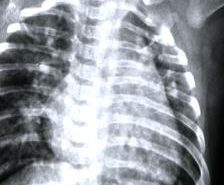FHIRBridge
Elevator Pitch: Imagine if doctors could access your complete health history with a few clicks, no matter where you got your care. FHIRBridge makes this possible by integrating healthcare systems with the latest interoperability standards, paving the way for seamless, accurate, and immediate data exchange that saves lives, reduces errors, and cuts costs.
Concept
A platform to streamline the integration of healthcare systems with the FHIR standard to ensure seamless patient data interoperability.
Objective
To provide a robust solution for healthcare providers to easily integrate FHIR standards into their existing systems, promoting interoperability and efficient data exchange.
Solution
FHIRBridge provides an integration service that maps existing healthcare data to FHIR standards, uses an ADR-guided FHIR server for secure and accurate data handling, and offers API integration support for healthcare software.
Revenue Model
Subscription-based model for healthcare providers, with tiered pricing depending on the size of the institution and the level of support needed.
Target Market
Primary care clinics, hospitals, healthcare IT providers, and regional health information organizations (RHIOs).
Expansion Plan
Initially focus on establishing a customer base in local healthcare networks, then gradually expand services regionally and nationally, incorporating feedback, and adapting to different healthcare regulations.
Potential Challenges
Complex technical integration with diverse healthcare IT systems, ensuring compliance with health data privacy laws, and overcoming resistance to change in healthcare organizations.
Customer Problem
Current lack of data interoperability in the healthcare sector causes delays in care, increases costs, and complicates patient data management.
Regulatory and Ethical Issues
Strict adherence to healthcare data privacy standards such as HIPAA in the U.S., GDPR in Europe, and ensuring ethical management of patient data without misuse.
Disruptiveness
Offers a scalable and secure way to unify disparate health information systems, which could lead to widespread changes in how patient data is exchanged and utilized in healthcare.
Check out our related research summary: here.




Leave a Reply